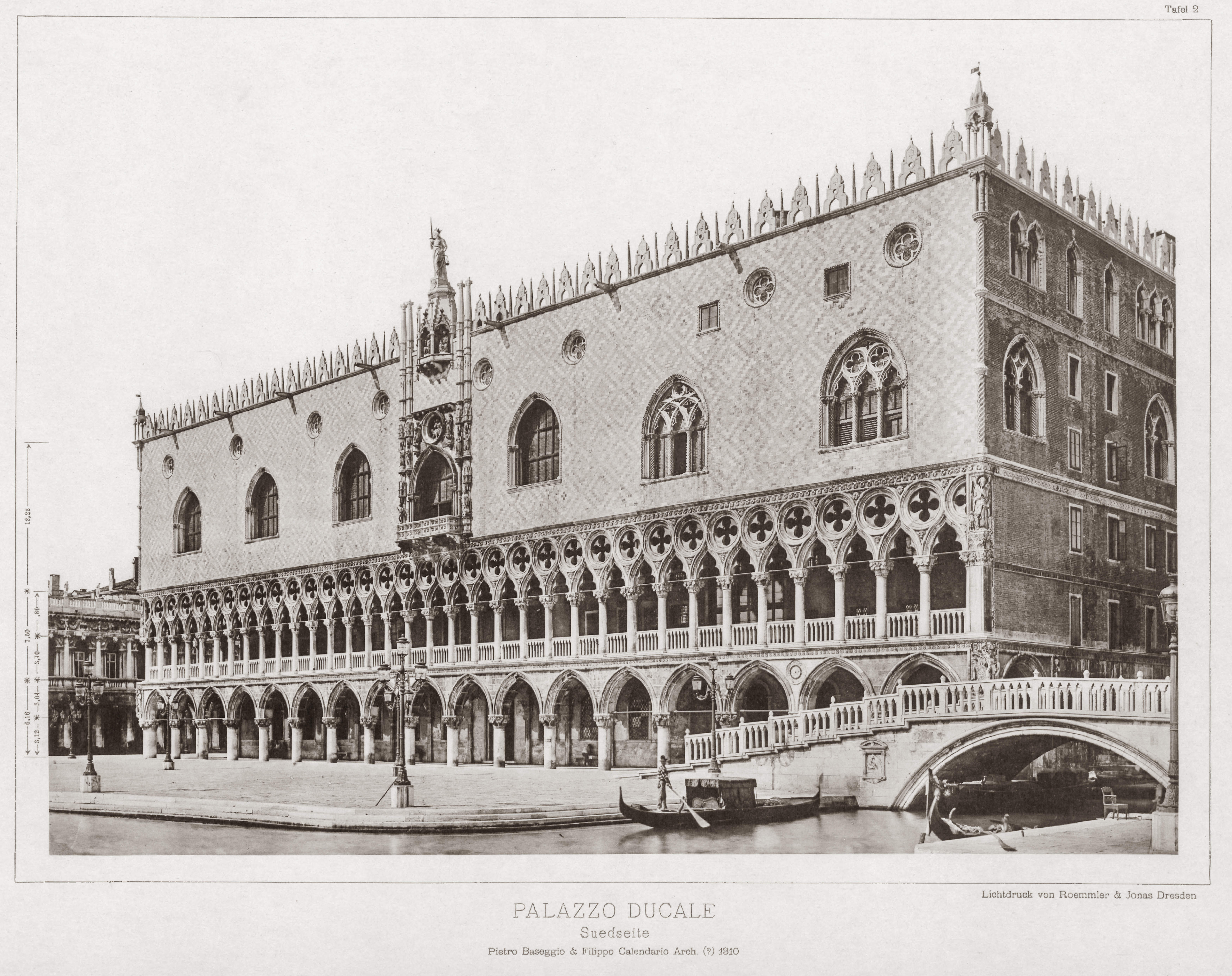Pietro Baseggio, Architect of the Ducal Palace in Venice, Italy
It took hundreds of years to build the Doge's Palace in Venice. A Baseggio was involved in the creation of the iconic palazzo facing the Canal Grande: The 14th century architect Pietro Baseggio (#6246).
In 1301 started the construction of the Ducal Palace as it is still in existence today. There are only a few facts known about the actual involvement of Pietro Baseggio, the most detailed might be the following paragraph taken from John Ruskin' book "The Stones of Venice" (Volume III, 1853).
Popular tradition and a large number of the chroniclers ascribe the building of the Ducal Palace to that Filippo Calendario who suffered death for his share in the conspiracy of Faliero. He was certainly one of the leading architects of the time, and had for several years the superintendence of the works of the Palace; but it appears, from the documents collected by the Abbe Cadorin, that the first designer of the Palace; the man to whom we owe the adaptation of the Frari traceries to civil architecture, was Pietro Baseggio, who is spoken of expressly as “formerly the Chief Master of our New Palace,”’ in the decree of 1361, quoted by Cadorin, and who, at his death, left Calendario his executor. Other documents collected by Zanotto, in his work on “Venezia e le sue Lagune,” show that Calendario was for a long time at sea, under the commands of the Signory, returning to Venice only three or four years before his death; and that therefore the entire management of the works of the Palace, in the most important period, must have been entrusted to Baseggio.
Due to the lack of documentation one particular misconception of Pietro's role in the Faliero conspiracy case is still very popular: The story that Pietro was executed for this crime. In fact, there are no documents that support the idea that Pietro Baseggio was involved. It is mentioned by several sources that Pietro had died "before 1354", the exact date is unknown.
Filippo Calendario took over and was put to death in 1355 after being found guilty of taking part in Doge Marino Falier's plot. Among the conjurors sentenced to life inprisonment we can find a certain Nicoletto Isarello who is said to be the husband of one of Pietro‘s daughters. This might have also contributed to the myth that Pietro himself was involved.
The execution of Doge Falier, Filippo Calendario and 9 others on April 18, 1355 however provides us with further information on how far the construction of the palace had progressed at that time. Marino Falier was beheaded on his grand staircase. Ten more delinquents, Filippo Calendario among them, were hanged in the second floor peristyl of the palazzo.
This leads us to the conclusion that in 1355 the building was firstly already used by the Doge as residence and that - secondly - the structural integrity of the colonnade and the gothic arks could support the additional weight. Knowing that Calendario had returned from his service at sea around 1351 only, it is safe to assume that Pietro Baseggio's contribution to the construction of the building was relevant, to say the least.
Here‘s our gallery with (partially) historic pictures and paintings of Pietro‘s iconic building.
